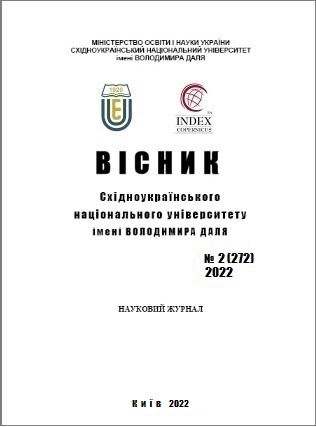Spatial thinking of students when studying graphic disciplines
DOI:
https://doi.org/10.33216/1998-7927-2022-272-2-23-28Keywords:
thinking, graphic disciplines, spatial representation, exercises, educational process, methods of didactics, analysis, synthesisAbstract
The article examines the problems that students face when studying graphic disciplines. At present, the task of further improving the quality of professional training of students has been set as the most important task for higher and secondary specialized institutions. This involves broad-based training of future specialists and the complex nature of mastering modern theoretical and applied knowledge, the ability to apply the knowledge gained in practice, possession of the necessary skills in a related field. A specialist with a higher education, but without knowledge and skills to receive and process graphic information, may turn out to be incompetent in professional activities. The preparedness of students for graphic activity is determined by the complex of knowledge acquired by them in the learning process, skills of reproductive and creative activity, which in the future determine their successful professional activity. A future engineer must have a high level of general and technical intelligence, well-developed spatial thinking, and have a high level of theoretical knowledge in the field of professional activity. In the system of training specialists for engineering specialties, one of the main places is occupied by the academic disciplines «Engineering Graphics» and «Descriptive Geometry». They contribute to the development of the future engineer of spatial representation, logical and constructive thinking, the ability to analyze and synthesize. Well-developed spatial awareness and imagination are prerequisites for successful learning in many academic disciplines. And the disciplines «Descriptive geometry» and «Engineering graphics» by their content make high demands on the level of development of spatial representations. This article reveals the reasons for the weak development of spatial representations among first-year students of universities. It is proposed to use the developed approach, including tasks, methods and system of exercises, tasks and tests, as one of the ways to successfully develop spatial representations in the study of graphic disciplines. Each group of exercises of this system is aimed at the conscious and active work of students and solves a specific problem arising from the theoretical foundations of the development of spatial representations.
References
1. Chopova N.V. Razrabotka sistemi uprazhnenii dlya razvitiya prostranstvennih predstavlenii studentov na zanyatiyah po inzhenernoi grafike. Nauka i sovremennost. 2010. № 2–2. Рр. 112-116.
2. Seabra R.D., Santos E.T. Developing the spatial visualiza-tion ability with a virtual reality tool for teaching descriptive geometry: A brazilian experience. Journal for Geometry and Graphics. 2013. No. 17 (1). Pp. 101-117.
3. Ernst J.V., Lane D., Clark A.C. Pictorial visual rotation ability of engineering design graphics students. Engineering Design Graphics Journal. 2015. No. 79 (1). Pp. 1-13.
4. Cvirkun L.O. Didaktichni pidhodi ta principi formuvannya proektno-konstruktorskoyi kompetentnosti u procesi vivchennya grafichnih disciplin. Pedagogika vish'oyi ta serednoyi shkoli. 2015. Vip. 44. Рр. 295-300.
5. Kushnarova N.M., Povechera I.V., Lyahovec G.M. Zasto-suvannya program komp’yuternoyi grafiki na urokah tehnologii z metoyu vizualizaciyi navchalnogo materialu. Visnik Nacionalnogo universitetu «Chernigivskii kolegium» imeni T.G. Shevchenka. Seriya: Pedagogichni nauki. 2019. Vip. 2. Рр. 142-148.
6. Gordon V.O., Semencov-Ogievskii M.A. Kurs nacher-tatelnoi geometrii: Uchebn. posobie dlya vtuzov / Pod red. V.O. Gordona i Yu.B. Ivanova. 24-e izd., ster. M.: Vissh. shk., 2000. 272 р.
7. Kondrateva T.M., Borisova A.Yu. Nachertate-lnaya ge-ometriya i inzhenernaya grafika: sb. zadach dlya studentov zaochnoi formi obucheniya. Razdeli 1, 2. M.: MGSU, 2013. 61 р.
8. Chen Y.C., Chi H.L., Hung W.H., Kang S.C. Use of tan-gible and augmented reality models in engineering graphics courses. Journal of Professional Issues in Engineering Education and Practice. 2011. No. 137 (4). Pp. 267-276.
9. Strelnikov V.Yu., Britchenko I.G. Suchasni tehnologiyi navchannya u vish'ii shkoli: modulnii posibnik dlya sluha-chiv avtorskih kursiv pidvish'ennya kvalifikaciyi viklada-chiv MIPK PUET. Poltava. 2013. 309 р.
10. Karpyuk L.V., Davydenko N.O. Modeling in AutoCAD for bachelors. Bicnik Skhіdnoukr. nac. un-tu іm. V. Dalya. 2020. № 1 (265). Рр. 25-28.

